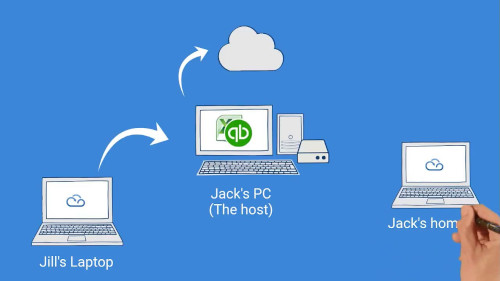The concept of working remotely has traditionally held a negative reputation, but more and more companies are embracing it. Take a look at the latest trends in remote working.
- The option to work remotely at least once a week is highly valued by many employees.
- Remote workers report higher job satisfaction.
- It’s no secret that remote work is here to stay, which is why more companies are investing in working environments that enable their workers to be flexible.
The purpose of this article is to provide managers and business owners with an overview of the current state and potential for remote work in the future.
It was rare to work remotely a decade ago. The option of working from home was usually only available as a special arrangement for families in certain circumstances. With the advancement of teleconferencing and teleworking technology, some businesses are able to run 100% remotely.
It was during the early stages of COVID-19 that the mass transition to remote working took place. In addition to preventing sickness from spreading, remote work has proven beneficial in a number of ways.
The trend of working from home is here to stay, so you need to know how to use remote communication technology to your advantage. You can work from home as effectively as you can in the office if you’ve got the right tools. Our guide to remote working covers the past, present, and future.
What is the effectiveness of remote working?
Employers were once reluctant to allow their employees to work from home regularly a decade ago. Employers were concerned about productivity loss when employees worked remotely. Despite this, the pandemic proved that employees were capable of working independently. As a result of the lockdown in March and April 2020, Prodoscore found that remote workers’ productivity increased 47 percent. Communication activities like emailing (up 57%), phone calls (up 230%) and chat messaging (up 9%) all increased significantly.
Remote work options have also been shown to increase job satisfaction in other recent studies. According to Buffer’s 2023 State of Remote Work report, 91 percent of respondents enjoy working remotely, with flexibility being the biggest benefit. In addition, McKinsey surveyed 25,000 workers in 2022 about their remote work experiences.
Among the reasons people search for new jobs, flexible work environments are the third reason (better pay/hours and career opportunities are the others). Workers are so eager to work remotely that 87 percent of respondents say they would accept the opportunity.
In the end, working remotely is effective, but it’s important to put it into practice correctly, and for every employer or employee, it may not be the best option.
Key Takeaway
Remote work can be made seamless with video conferencing. With live video feeds, out-of-office employees can see and speak to one another in real time, anywhere they have an internet connection, which is the next best thing to face-to-face meetings. It wouldn’t be possible without the widespread adoption of broadband internet in the past 10 to 15 years.
The technology has advanced so quickly that many companies have abandoned traditional offices in favor of coworking spaces to accommodate their remote workforce.
A natural disaster or epidemic can also present unique opportunities for remote workers. Workers can join resilient teams and protect public health using remote work options during the pandemic.
The majority of companies in Buffer’s 2023 report paid for expenses such as hardware, office equipment, and supplies, with 64 percent providing hardware and 40 percent providing a desk and chair. Remote employees were provided with Internet access in 28 percent of cases.
Towards a brighter future
It may take a while for the structure of remote work to evolve, but this flexible business model is here to stay. With technological advancements such as artificial intelligence, remote management may continue to grow.
While overseeing a remote workforce might seem daunting, with the right technology and hardworking employees, it can be seamless. It’s important to embrace workplace innovation in the long run, as many employees now expect remote work options.





